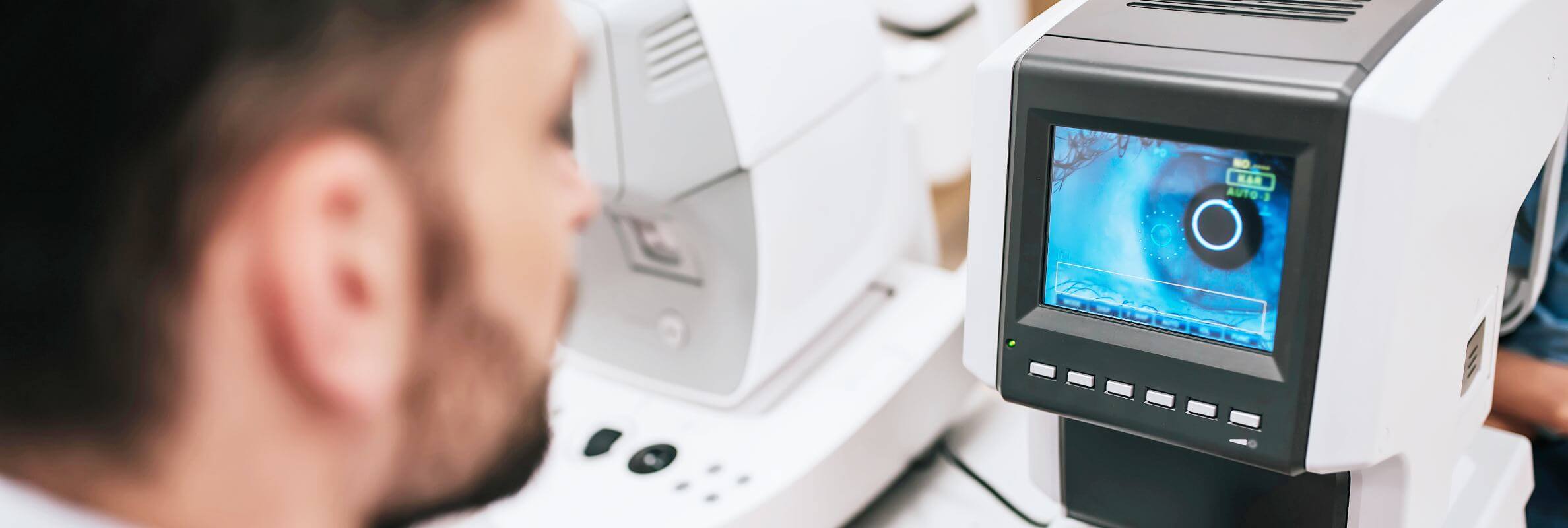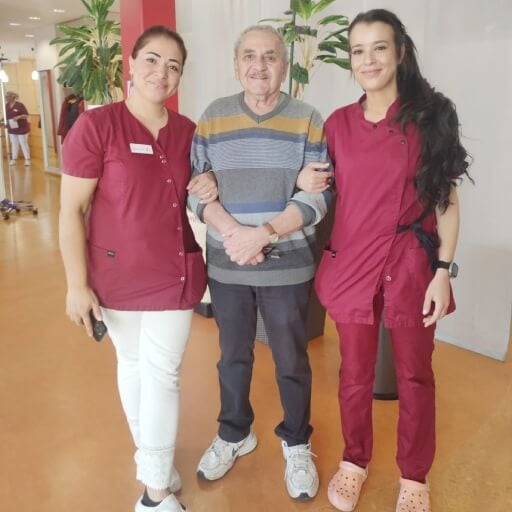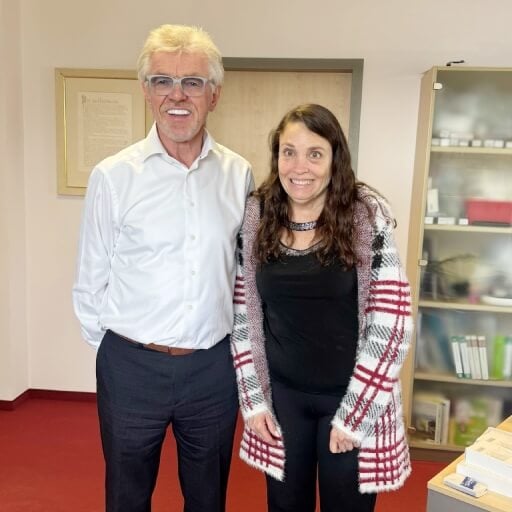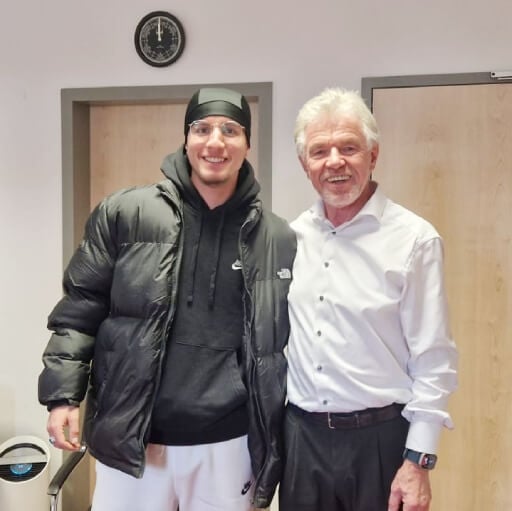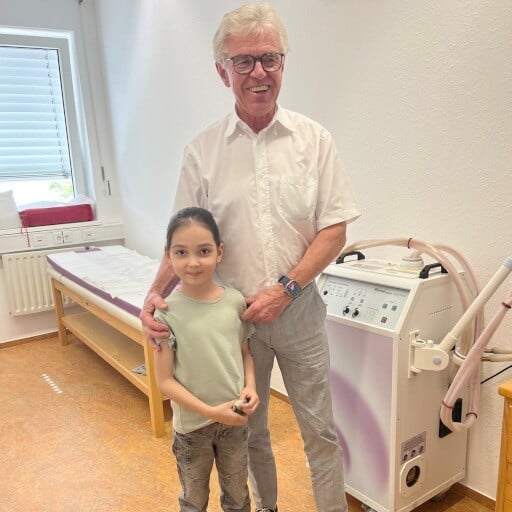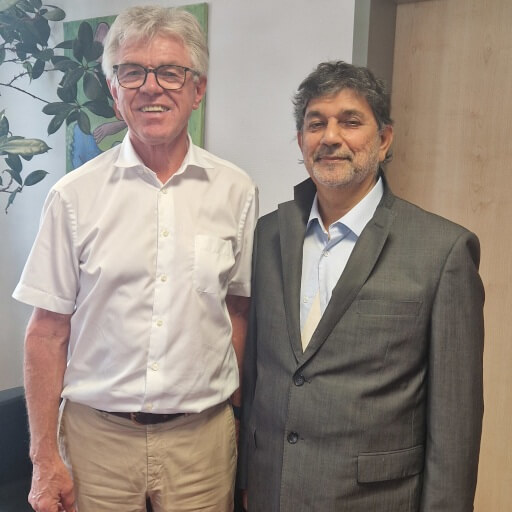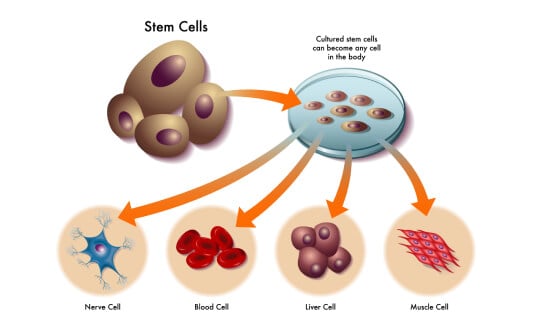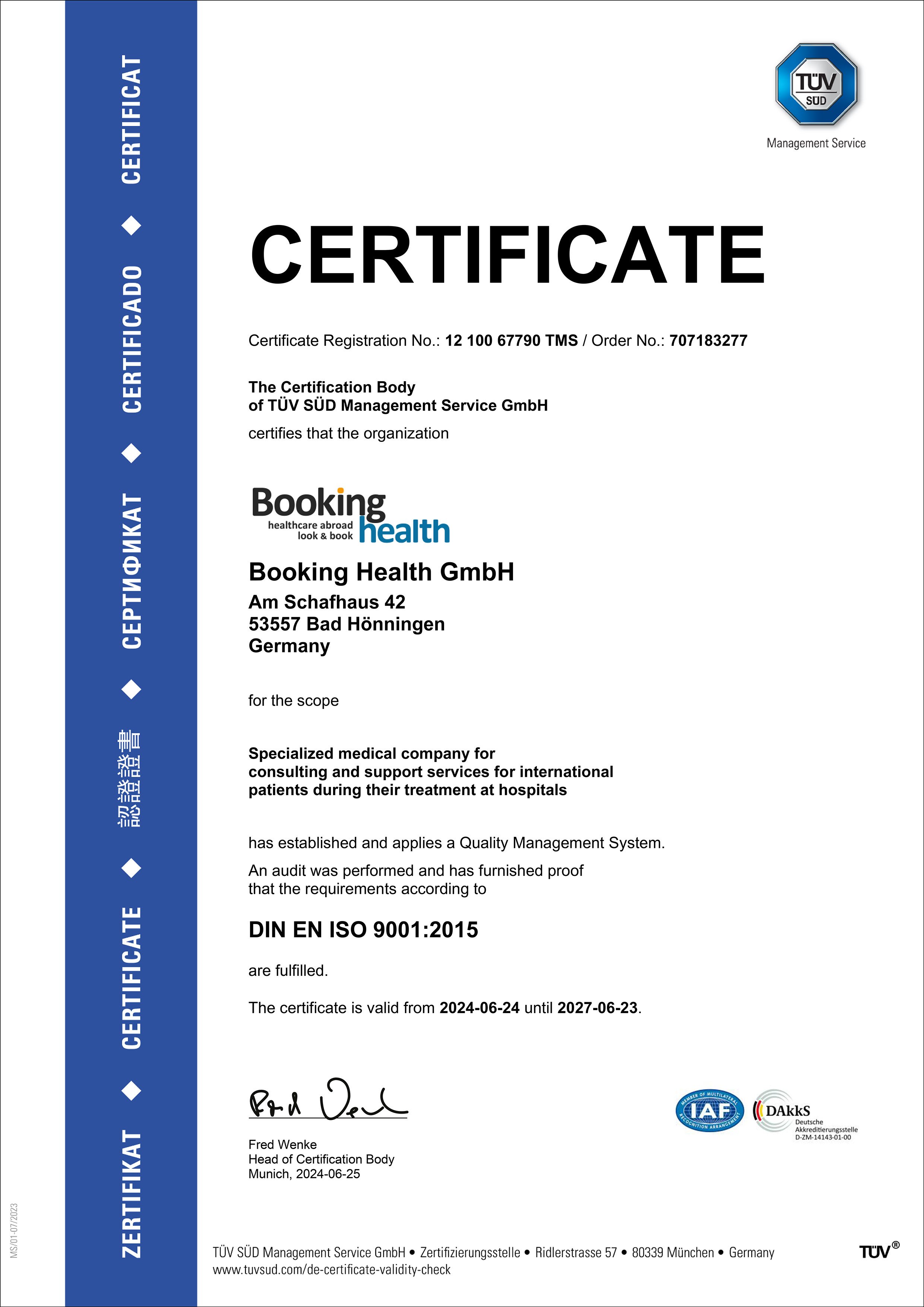Атрофия зрительного нерва (АЗН) – прогрессирующее офтальмологическое заболевание, при котором в зрительном нерве, отвечающем за передачу зрительной информации от глаза к головному мозгу, происходят дегенеративные изменения. Патология приводит к постепенной потере зрения, а в тяжелых случаях – к полной слепоте. АЗН является не самостоятельным заболеванием, а представляет собой последнюю стадию различных первичных патологий, поражающих зрительный нерв. К ним относятся глаукома, неврит зрительного нерва, ишемические нарушения, травматические повреждения, воспалительные процессы, а также наследственные патологии, например, наследственная оптическая нейропатия Лебера. [1]
По данным исследования глобального бремени болезней (Global Burden of Disease Study) [2], нарушениями зрения страдают более 1,2 миллиарда человек во всем мире. При этом в отдельных регионах, таких как Англия и Уэльс, атрофия зрительного нерва является причиной примерно 14% новых случаев слепоты среди взрослых людей трудоспособного возраста. [3] Патология оказывает существенное влияние на качество жизни больного, особенно с учетом того, что АЗН зачастую сопровождается необратимыми нарушениями зрения.
Традиционные методы лечения направлены лишь на замедление прогрессирования заболевания или устранение симптомов – они редко приводят к восстановлению зрения. Однако благодаря последним достижениям в области регенеративной медицины был разработан новый метод лечения атрофии зрительного нерва – терапия стволовыми клетками. Этот инновационный подход помогает восстановить нервы и их функции, способствуя улучшению результатов лечения при неэффективности традиционных терапевтических методик. [4]
Если у вас или у кого-то из ваших близких диагностировали АЗН – это не повод опускать руки. Теперь у пациентов, столкнувшихся с этим заболеванием, появилась реальная надежда на выздоровление, особенно частичное восстановление зрения и улучшение функций. При своевременном лечении и применении передовых терапевтических методик даже диагноз, который ранее радикально менял жизнь пациента, теперь можно превратить в контролируемое заболевание.
Атрофия зрительного нерва: общие сведения о заболевании
Как уже упоминалось выше, АЗН представляет собой дегенеративный процесс, провоцирующий поражение волокон зрительного нерва. В большинстве случаев он возникает из-за повреждения аксонов ганглиозных клеток сетчатки, вследствие которого нарушается передача зрительных сигналов от сетчатки к головному мозгу. Данный дегенеративный процесс приводит к необратимому повреждению нервов и потере зрения. [1]
Типы атрофии зрительного нерва
АЗН классифицируют в зависимости от первичных причин, лежащих в основе ее развития [1]:
- Первичная атрофия зрительного нерва – возникает без предшествующего отека диска зрительного нерва, часто связана с наследственными заболеваниями или травматическими повреждениями.
- Вторичная атрофия зрительного нерва – развивается после отека диска зрительного нерва вследствие воспалительного процесса (например, неврита зрительного нерва), повышения внутричерепного давления или ишемических нарушений.
- Последовательная атрофия зрительного нерва – развитие этого типа АЗН связано с заболеваниями или дегенерацией сетчатки, например, пигментным ретинитом.
- Острые состояния, такие как травматическое повреждение или внезапные ишемические нарушения, также могут привести к стремительной дегенерации зрительного нерва – в таких ситуациях требуется неотложная диагностика.
Симптомы заболевания
У пациентов с атрофией зрительного нерва зачастую наблюдаются такие проявления заболевания [1]:
- Помутнение зрения или снижение остроты зрения
- Бледность диска зрительного нерва при осмотре глазного дна
- Снижение цветового зрения
- Дефекты центрального или периферического поля зрения
Методы диагностики
Ранняя и точная диагностика имеет решающее значение. Как правило, обследование включает [1]:
- Оптическую когерентную томографию (ОКТ) – измерение толщины нервных волокон сетчатки
- Оценку полей зрения – выявление слепых пятен и сужения полей зрения
- Регистрацию зрительных вызванных потенциалов (ЗВП) – оценка функциональной целостности зрительных нервных путей
Терапия стволовыми клетками и ее особенности
Терапия стволовыми клетками – это инновационный метод лечения повреждений зрительного нерва, направленный на восстановление или замену поврежденных тканей с помощью естественных восстановительных механизмов организма. Данный подход предполагает использование аутологичных (собственных) или аллогенных (донорских) стволовых клеток, которые еще не дифференцировались в конкретные типы тканей. Стволовые клетки способны самообновляться, снимать воспаление, стимулировать процессы регенерации тканей и даже поддерживать функцию митохондрий, благодаря чему терапия с их применением считается многообещающим подходом к лечению АЗН. [4]
Доктор Зибенхюнер, ведущий специалист в области клеточной терапии с более чем 40-летним клиническим опытом, утверждает, что: «Стволовые клетки помогают восстановить ткани, утратившие свои нормальные функции». Он отмечает, что терапия стволовыми клетками не обязательно заменяет поврежденные клетки, но может реактивировать собственные неэффективные нервные клетки пациента, значительно улучшая неврологические функции, в том числе зрение у отдельных пациентов.
У пациентов с АЗН стволовые клетки вводятся не непосредственно в зрительный нерв, а в окружающие его структуры. Благодаря своим миграционным свойствам, эти клетки затем самостоятельно направляются к зонам повреждения или воспаления. Как только они попадают в таргетный участок, они запускают нейропротекторные и регенеративные процессы, которые помогают улучшить функцию зрительного нерва и замедлить дегенерацию.
В клинических условиях при заболеваниях зрительного нерва применяют несколько типов стволовых клеток, в том числе [4]:
- Мезенхимальные стволовые клетки (МСК) – получают из костного мозга, жировой ткани или пуповины
- Нейральные стволовые клетки (НСК) – предшественники нейронов и глиальных клеток
- Стволовые клетки пуповины – известные своей высокой пластичностью и низким уровнем иммунного отторжения
Доктор Зибенхюнер о впечатляющих возможностях передовой терапии стволовыми клетками
Механизм действия терапии стволовыми клетками при повреждении зрительного нерва
Терапия стволовыми клетками дает надежду пациентам с хроническими или прогрессирующими патологиями зрительного нерва, особенно при частичном сохранении зрения. Данный передовой подход к лечению в первую очередь направлен на нейропротекцию, иммуномодуляцию и восстановление нейронов – это цели, которых невозможно достичь с помощью традиционных лекарственных препаратов. [4]
Пациенты, которые являются подходящими кандидатами на такое лечение атрофии зрительного нерва, зачастую страдают от [4]:
- Частичной потери зрения (поскольку полное разрушение зрительного нерва необратимо)
- Хронических форм атрофии зрительного нерва
- Прогрессирующей дегенерации вследствие глаукомы, ишемических нарушений, травматических повреждений или наследственных заболеваний
В большинстве случаев стволовые клетки при повреждениях зрительного нерва вводятся посредством [4]:
- Ретробульбарной инъекции (в область вокруг глаза для воздействия на зрительный нерв)
- Внутривенной инфузии (для системной регуляции иммунитета и воспалительных процессов)
- Интратекальной инъекции (в спинномозговую жидкость – данный подход используется в рамках некоторых протоколов для более широкого нейротерапевтического воздействия)
Сразу после введения в организм стволовые клетки направляются к поврежденным тканям, способствуя [4]:
- Иммуномодуляции – снижению вредоносной аутоиммунной активности
- Подавлению воспалительного процесса – созданию более благоприятной среды для восстановление зрения
- Регенерации нейронов – стимуляции роста аксонов и поддержке выживаемости клеток
Клинические исследования демонстрируют обнадеживающие результаты: например, метаанализ 2024 года [4] показал, что терапия МСК способствовала значительному улучшению средних показателей остроты зрения (оценка по шкале LogMAR с 0,90 до 0,65, p = 0,001), причём в течение шести месяцев у многих пациентов наблюдалось ощутимое улучшение результатов. Кроме того, клиническое исследование 2019 года [5], включающее лечение с применением супрахориоидальной имплантации МСК, полученных из жировой ткани, показало стойкое улучшение остроты зрения, поля зрения и результатов мультифокальной электроретинографии у всех пациентов по истечению 6 месяцев. Эти результаты свидетельствуют о том, что введение стволовых клеток на достаточно ранних стадиях заболевания помогает значительно замедлить или даже обратить вспять ухудшение зрения, особенно у пациентов с частично сохранившейся функцией зрительного нерва.
Преимущества лечения АЗН стволовыми клетками
Терапия стволовыми клетками всё чаще рассматривается как эффективный метод, способный улучшить состояние пациентов с атрофией зрительного нерва. Основные преимущества подхода [4, 5]:
- Замедление или остановка прогрессирования потери зрения за счет защиты оставшихся нервных волокон
- Улучшение центрального зрения и цветовосприятия, которое часто наблюдается в течение 3-6 месяцев после лечения
- Восстановление функций зрительного нерва, так как стволовые клетки способствуют регенерации и выживанию поврежденных аксонов
- Повышение качества жизни за счет улучшения подвижности, способности читать и независимости пациента в повседневной жизни
Важно отметить, что даже частичное восстановление зрения может иметь серьезные влияние на жизнь человека. Многие пациенты отмечают снижение зависимости от посторонней помощи, большую уверенность в ориентировании в окружающей среде и возможность вернуться к своей профессиональной деятельности или хобби, от которых ранее пришлось отказаться из-за нарушения зрения. [4, 5]
Терапия стволовыми клетками не способна обеспечить полное излечение, но она потенциально способствует восстановлению функций в тех случаях, в которых ранее у пациента не было бы ни единого шанса на успех. Для пациентов с АЗН она представляет собой кардинально новый подход к лечению атрофии глаза и обеспечению долгосрочной нейрорегенерации.
Возможные ограничения и побочные эффекты
Хотя терапия стволовыми клетками при АЗН открывает многообещающие возможности, важно также осознавать её ограничения и риски. Данный метод лечения атрофии зрительного нерва не подходит пациентам с полной потерей зрения, поскольку полностью погибшие аксоны зрительного нерва не способны к регенерации. Наиболее эффективные результаты терапия демонстрирует в тех случаях, когда сохраняется часть жизнеспособной нервной ткани.
Потенциальные риски метода:
- Инфекция в месте инъекции
- Иммунный ответ или отторжение трансплантата (чаще всего встречается при аллогенной трансплантации)
- Локализованное воспаление после процедуры
- Отсутствие гарантированных результатов, поскольку не у всех пациентов наблюдается ответ на лечение
Несмотря на эти риски, профиль безопасности терапии стволовыми клетками в целом благоприятен. Клинические испытания и описания клинических случаев пациентов показывают, что большинство из них хорошо переносят процедуру, особенно при использовании аутологичных клеток. [4, 5] Однако важно отметить, что терапия стволовыми клетками при АЗН во многих странах всё ещё считается экспериментальной и не входит в стандартные протоколы лечения.
Сравнительный анализ терапии стволовыми клетками и традиционных методик лечения
При рассмотрении вариантов лечения атрофии зрительного нерва важно сопоставить традиционные подходы к лечению с потенциально регенеративной терапией стволовыми клетками. В то время как традиционные методы лечения направлены на замедление прогрессирования заболевания или устранение симптомов, терапия стволовыми клетками воздействует на первопричину патологии – повреждение нерва.
| Параметр | Терапия стволовыми клетками | Традиционное лечение |
|---|---|---|
| Механизм действия | Регенерация | Лечение симптомов |
| Цель | Восстановление нервов | Контроль давления, антиоксиданты |
| Восстановление зрения | Вполне возможно (во многих случаях наблюдается частичное восстановление зрения) | Маловероятно |
| Продолжительность действия | Долгосрочный эффект | Временный эффект |
| Стоимость (средняя)* | От €20 790 | €3,000-€10,000 |
* В таблице указана ориентировочная стоимость лечения. Цены варьируются в зависимости от уровня клиники, в которой будет проходить лечение, состояния здоровья пациента, необходимого количества инъекций и сложности диагностической программы.
Безусловно, проведение терапии стволовыми клетками требует больше первоначальных финансовых вложений, но такое лечение способно обеспечить более долгосрочный функциональный результат, особенно на ранних и промежуточных стадиях дегенерации зрительного нерва.
История Софии и ее успешный опыт лечения АЗН стволовыми клетками
София – молодая женщина, которой диагностировали атрофию зрительного нерва, спровоцированную невритом зрительного нерва. В итоге, АЗН привела к прогрессирующей потере зрения в левом глазу. Со временем дегенерация существенно повлияла на повседневную жизнь Софии и ее независимость в быту. Традиционные методы лечения пациентке не помогли. Врачи на родине сказали ей, что шансов на выздоровление практически нет. София не готова была принять приговор медиков, поэтому начала искать альтернативные варианты лечения. Так она узнала о компании Booking Health, специалисты которой организовали для нее лечение атрофии зрительного нерва стволовыми клетками.
София прошла индивидуально составленную для нее программу лечения в Германии, которая включала ретробульбарное (вокруг глаза) и внутривенное введение МСК. Уже через три месяца она начала замечать, что чувствительность к свету и периферическое зрение значительно улучшились. Офтальмолог подтвердил, что зрительный нерв стал более чувствительным и стабильным, чем раньше.
«Я стала более уверенной в себе. Теперь я счастливый человек, ведь я могу выходить на улицу одна, снова узнаю лица людей и больше не чувствую себя беспомощной», – говорит София.
Она особо отметила профессионализм медицинской команды в немецкой клинике, комфортную обстановку в медучреждении и заботливую поддержку со стороны специалистов Booking Health, которые взяли на себя решение всех организационных вопросов – от оформления медицинской визы и предоставления услуг переводчика до записи на прием в клинику.
София также отметила, что процедура была максимально комфортной и безболезненной. После терапии у девушки не было никаких серьезных побочных эффектов, лишь легкая временная усталость. Сегодня она призывает других людей, столкнувшимся с таким же сложным диагнозом, не сдаваться:
«Не бойтесь. Боритесь за своё здоровье. Я живое доказательство того, что даже после потери зрения есть возможность добиться его улучшения».
Полная история Софии:
Где пройти лечение и сколько оно стоит
АЗН – это серьезный диагноз, столкнувшись с которым пациенты зачастую опускают руки и не знают, что им делать дальше. Когда зрение ухудшается, а врачи говорят: «Мы больше ничего не можем сделать», может показаться, что выхода нет. Однако даже когда кажется, что возможности лечения весьма ограничены, всегда есть место для надежды, особенно в такую уникальную эпоху, когда медицина развивается невероятно стремительными темпами.
Медицинские инновации продолжают расширять границы: новаторские методы лечения, передовые методы визуализации и возможности регенеративной медицины меняют границы возможного. Традиционные терапевтические подходы, такие как прием витаминов, кортикостероидов и препаратов для снижения давления, применяются уже несколько десятилетий, однако зачастую они имеют ограничения, поскольку способны лишь устранить симптомы заболевания, но при этом не могут восстановить утраченные функции. Для многих пациентов они просто неэффективны.
Именно в таких случаях спасением для пациента становится терапия стволовыми клетками. Этот передовой метод лечения открывает новые перспективы для восстановления зрительного нерва, при этом пациенту не придется неделями находится в клинике или же пожизненно принимать какие-либо лекарственные препараты. Во многих случаях поведение всего нескольких сеансов лечения с минимальным профилем побочных эффектов помогает обеспечить защиту и восстановление поврежденного зрительного нерва.
Инновационное лечение стволовыми клетками проводится в лучших немецких клиниках, включая Клинику расширенной биологической медицины во Франкфурте-на-Майне. При поддержке профессиональных операторов медицинского туризма, таких как Booking Health, пройти терапию в Германии может пациент из любого уголка мира. И хотя метод является инновационным, он вполне доступен каждому. Стоимость лечения атрофии зрительного нерва стволовыми клетками стартует от €20 790 и зависит от уровня клиники, необходимого пациенту количества инъекций и сложности предстоящей диагностики.
Зачастую в эту стоимость входит не только терапия, но и комплексное обследование, размещение в гостинице, трансфер в клинику и обратно в гостиницу, а также многоязычная поддержка, благодаря чему иностранные пациенты в поиске первоклассного лечения могут получить его без лишних хлопот и стресса.
Пока терапия стволовыми клетками не способна обеспечить полное излечение АЗН, но она может помочь кардинально изменить жизнь пациента с этой патологией, выступая в качестве надежного инструмента для сохранения, защиты и, вполне возможно, даже улучшения зрения. Не отказывайтесь от этой возможности. Если вы желаете пройти терапию стволовыми клетками при АЗН в Германии, компания Booking Health готова предоставить полную поддержку на пути к лечению.
Поездка на лечение за границу с Booking Health
Поиск наиболее эффективной тактики лечения при АЗН сопряжен с рядом трудностей. После бесчисленных приемов у врачей, постановки неточных диагнозов и предложений ограниченных вариантов лечения вы можете ощущать эмоциональное и физическое истощение. В такие моменты проще всего сделать выбор в пользу стандартных методов лечения, которые помогут лишь устранить симптомы, но не смогут дать надежду на выздоровление. Однако теперь инновационные подходы, такие как регенеративная терапия стволовыми клетками, кардинально меняют результаты лечения пациентов, которым ранее говорили, что им уже ничем нельзя помочь.
Обратитесь к экспертам Booking Health, и они помогут вам принять взвешенное решение, а также предоставят индивидуальную программу лечения, разработанную с учетом вашего уникального клинического случая. Обладая более чем 12-летним опытом работы в сфере организации лечения за рубежом с применением инновационных методик, компания Booking Health уже помогла тысячам пациентов получить доступ к передовому медицинскому обслуживанию, включая экспериментальную регенеративную терапию при таких нейродегенеративных заболеваниях, как атрофия зрительного нерва. Мы предлагаем полный спектр услуг по координации поездки на лечение за рубеж, гарантируя вам медицинское обслуживание мирового класса с максимальным комфортом и душевным спокойствием.
Мы предлагаем:
- Комплексную оценку и анализ ваших медицинских заключений
- Разработку индивидуальной программы лечения и диагностики
- Подбор наиболее подходящей клиники и врача
- Помощь в оформлении и направлении медицинской документации в выбранную для лечения клинику
- Онлайн-консультации со специалистами в области офтальмологии и регенеративной медицины перед началом лечения за границей
- Сопровождение на месте и экспертные консультации во время пребывания в больнице
- Рекомендации по последующему уходу после возвращения домой
- Полную координацию поездки и пребывания в другой стране, включая визовую поддержку и помощь в бронировании авиабилетов
- Услуги персонального координатора и переводчика 24/7
- Прозрачные цены на лечение без скрытых платежей
Зрение – это одно из самых ценных чувств. Когда оно начинает ухудшаться, важное значение приобретает поиск правильного лечения. Booking Health – надежный партнер, обеспечивающий доступ к инновационным и персонализированным методам лечения, включая терапию стволовыми клетками, в ведущих клиниках Германии. Мы сопровождаем вас на каждом этапе пути к улучшению зрения и повышению качества жизни. Свяжитесь с нашим медицинским консультантом уже сегодня, и он расскажет вам о возможных вариантах лечения атрофии зрительного нерва.
Терапия стволовыми клетками: успешный опыт пациентов с Booking Health
Частые вопросы о лечении атрофии зрительного нерва (АЗН) с помощью стволовых клеток
Отправить запрос на лечениеАтрофия зрительного нерва – это патологическое состояние, характеризующееся дегенерацией зрительного нерва, которое приводит к прогрессирующей потере зрения из-за его повреждения. Атрофия может развиваться вследствие травматического повреждения, глаукомы, ишемических нарушений, воспалительных процессов или генетических заболеваний.
При частичной потери зрения терапия стволовыми клетками помогает улучшить функцию зрительного нерва и остроту зрения. К сожалению, полная слепота, спровоцированная полной гибелью нерва, необратима.
Стволовые клетки снимают воспаление, а также способствуют регенерации нервов и восстановлению функции митохондрий, помогая поврежденным клеткам зрительного нерва восстановить свою функциональность.
Да, такое лечение обычно хорошо переносится, особенно при использовании аутологичных стволовых клеток. Терапия может вызвать незначительный воспалительный процесс или раздражение в месте выполнения инъекции.
Как правило, используются мезенхимальные стволовые клетки (МСК), нейральные стволовые клетки (НСК) и стволовые клетки, полученные из пуповины.
Да, в Германии, Китае и США в настоящее время проводятся многочисленные клинические исследования и пилотные испытания, демонстрирующие обнадеживающие предварительные результаты.
По результатам последних исследований, у многих пациентов с хронической атрофией зрительного нерва после терапии стволовыми клетками наблюдается улучшение остроты зрения и полей зрения. Наибольшие шансы на успех имеют пациенты, у которых сохраняются определенные функции зрительного нерва, при этом в нескольких клинических испытаниях заметные улучшения отмечались уже в течение 6 месяцев.
Первые результаты лечения могут проявиться уже через 2-3 месяца, при этом дальнейшее улучшение может наблюдаться до 6 месяцев.
Стволовые клетки стимулируют регенерацию зрительного нерва, активизируя спящие клетки и замедляя дальнейшую дегенерацию, хотя полная регенерация встречается редко.
Идеальными кандидатами на такое лечение являются пациенты с частичной потерей зрения, начальной или умеренной стадиями атрофии зрительного нерва и стабильным общим состоянием здоровья.
К незначительным рискам относятся раздражение в месте инъекции, воспаление и иммунный ответ (при использовании аутологичных клеток встречается редко). При надлежащем проведении в строгом соответствии с протоколом терапия стволовыми клетками считается безопасным методом лечения.
Стоимость лечения атрофии зрительного нерва стартует от €20 790, в зависимости от уровня клиники, в которой будет проходить лечение, и применяемого протокола.
Ведущие клиники Германии, такие как Клиника расширенной биологической медицины Франкфурт-на-Майне, предлагают программы лечения с международной аккредитацией.
Выбирайте лечение за рубежом и Вы, несомненно, получите отличный результат!
Авторы:
Статья составлена под редакцией экспертов в области медицины, врачей-специалистов доктора Надежды Иванисовой и доктора Богдана Михальнюка. Для лечения состояний, о которых идет речь в статье, необходимо обратиться к врачу; информация в статье не предназначена для самолечения!
С редакционной политикой, которая отражает наше стремление к точности и прозрачности, можно ознакомиться здесь. Перейдите по ссылке, чтобы ознакомиться с нашими правилами.
Источники:
[1] National Library of Medicine. Optic Atrophy. https://www.ncbi.nlm.nih.gov/books/NBK559130/
[2] Lancet Regional Health – Americas. National Sex- and Age-Specific Burden of Blindness and Vision Impairment by Cause in Mexico in 2019: A Secondary Analysis of the Global Burden of Disease Study 2019. https://www.thelancet.com/journals/lanam/article/PIIS2667-193X(23)00126-6/fulltext/
[3] BMJ Open. A Comparison of the Causes of Blindness Certifications in England and Wales in Working Age Adults (16-64 years), 1999-2000 with 2009-2010. https://bmjopen.bmj.com/content/4/2/e004015
[4] BMC Ophthalmology. Evaluating the Impact of Mesenchymal Stem Cell Therapy on Visual Acuity and Retinal Nerve Fiber Layer Thickness in Optic Neuropathy Patients: A Comprehensive Systematic Review and Meta-Analysis. https://bmcophthalmol.biomedcentral.com/articles/10.1186/s12886-024-03588-2
[5] International Ophthalmology. Six-Month Results of Suprachoroidal Adipose Tissue-Derived Mesenchymal Stem Cell Implantation in Patients with Optic Atrophy: A Phase 1/2 Study. https://link.springer.com/article/10.1007/s10792-019-01141-5
Читайте:
Лечение стволовыми клетками в клиниках Германии
Лечение атрофии зрительного нерва стволовыми клетками в Германии
Меню статьи:
- Атрофия зрительного нерва: общие сведения о заболевании
- Терапия стволовыми клетками и ее особенности
- Механизм действия терапии стволовыми клетками при повреждении зрительного нерва
- Сравнительный анализ терапии стволовыми клетками и традиционных методик лечения
- История Софии и ее успешный опыт лечения АЗН стволовыми клетками
- Где пройти лечение и сколько оно стоит
- Поездка на лечение за границу с Booking Health
- Частые вопросы о лечении атрофии зрительного нерва (АЗН) с помощью стволовых клеток
Не знаете, с чего начать?
Свяжитесь с Booking Health